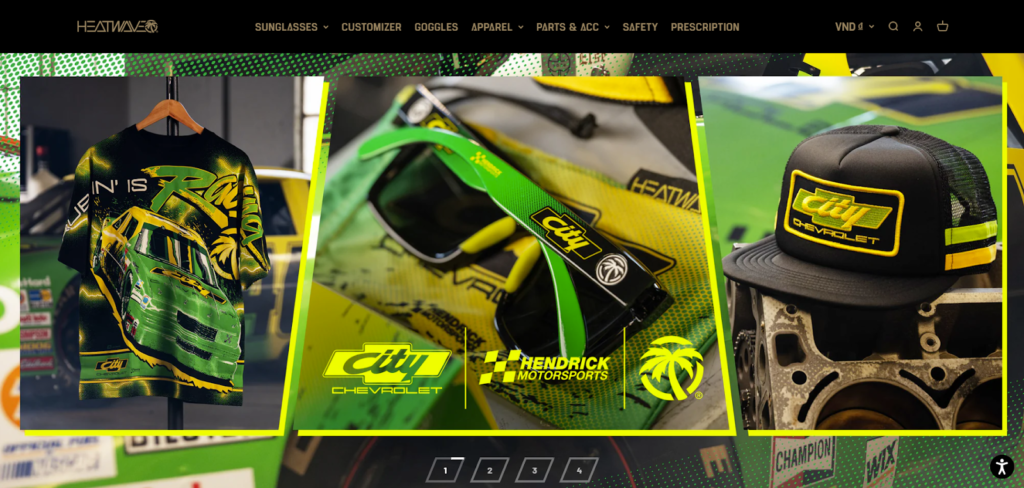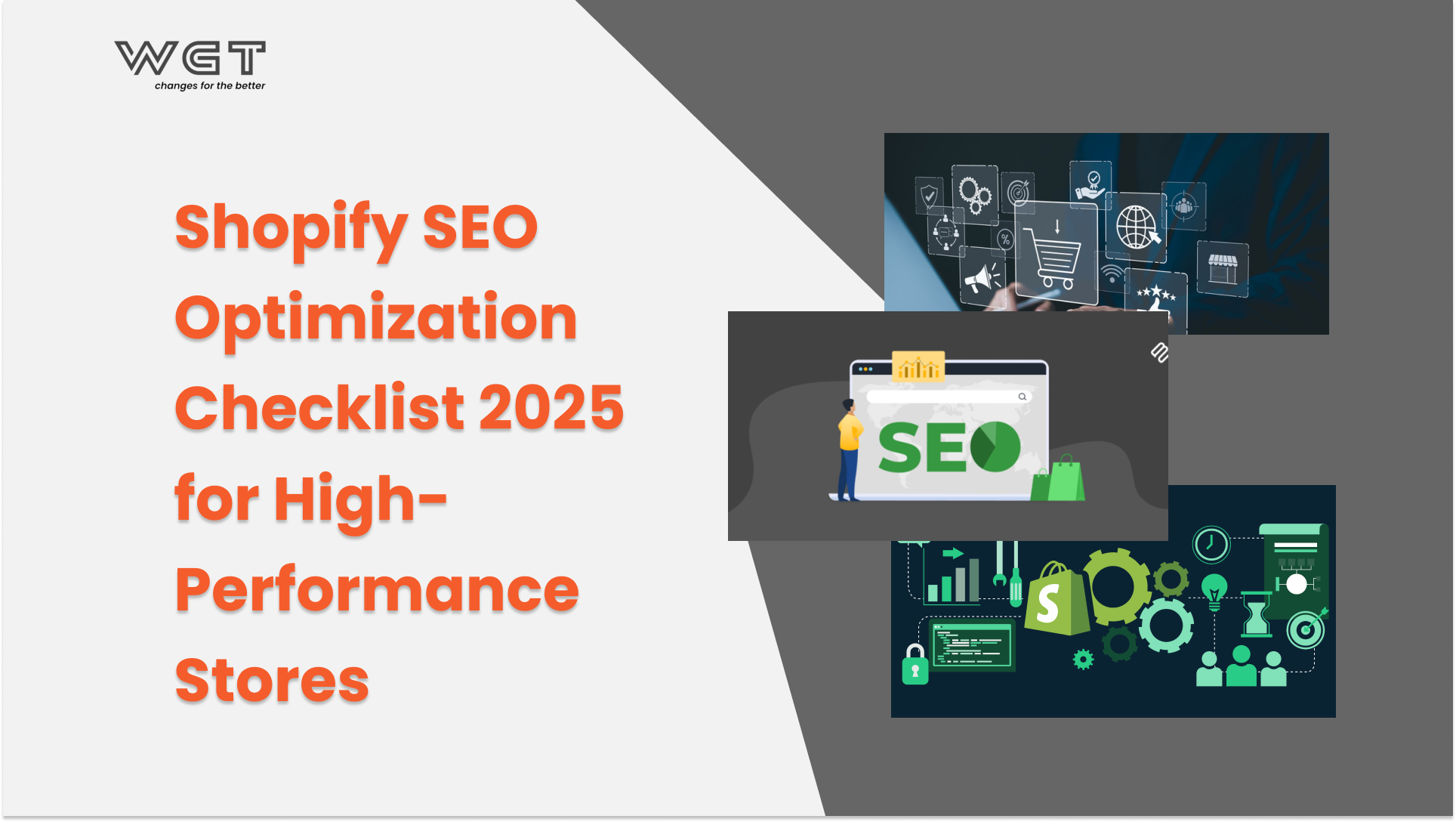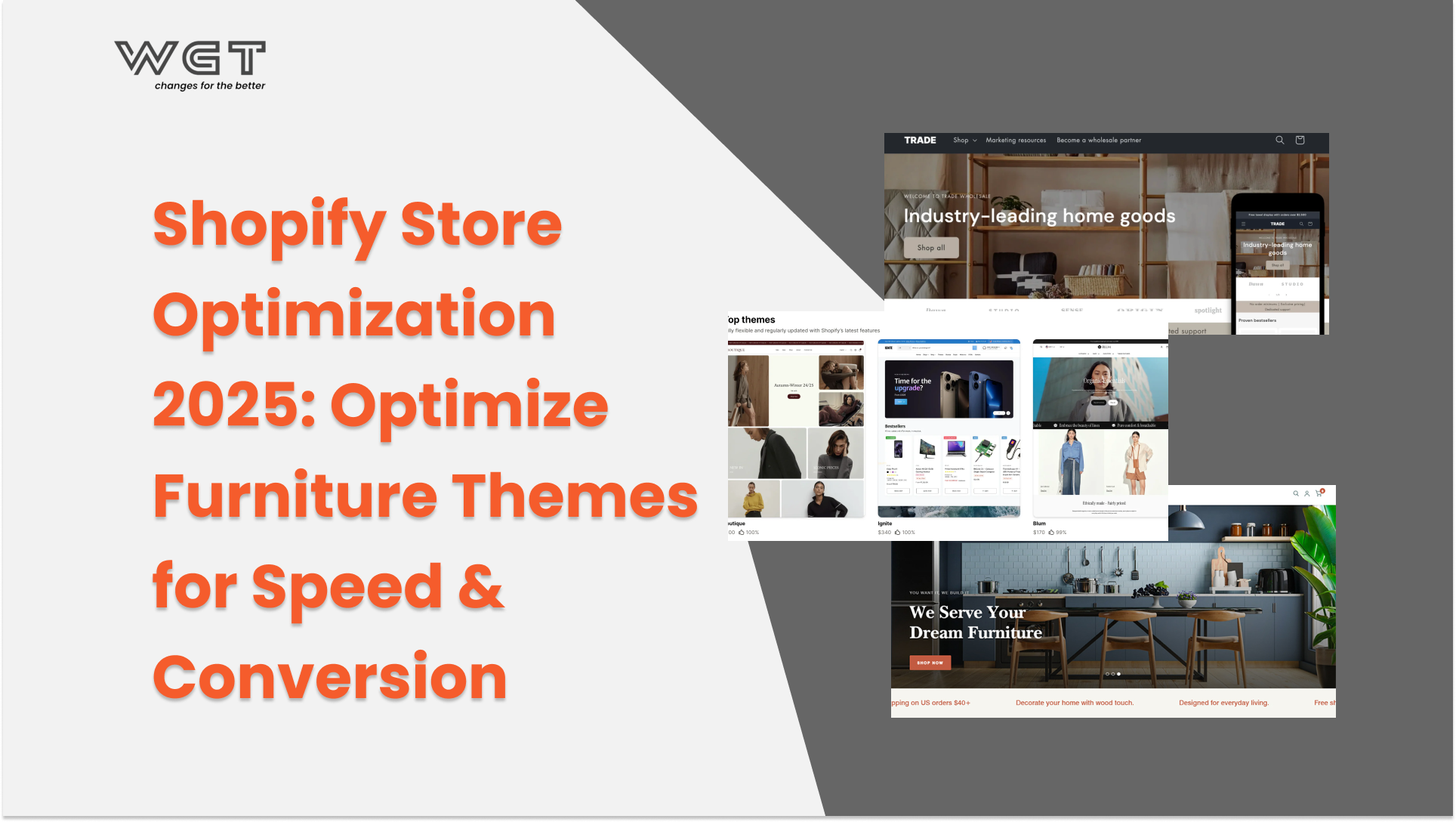2025 isn’t just another holiday season, it’s a complete reset for how eCommerce trends will shape growth.
The old playbook of heavy discounts and ad spend won’t be enough. Shoppers are buying earlier, expecting faster sites, local checkout options, and personalized experiences that feel effortless.
This year, success will belong to merchants who prepare, not react.
Those who treat readiness as a strategy, not a checklist: speed that converts, automation that scales, and operations that hold steady when traffic surges.
At Wgentech, we call it Performance Readiness – the ability to turn every system, checkout, and campaign into a connected growth engine. That mindset sits at the center of 2025 eCommerce trends, where preparation outperforms promotion.
In this report, we explore the five eCommerce trends defining Holiday 2025 drawn from data, platform insights, and real Shopify brand performance plus the actions merchants should take now to convert readiness into revenue..
Because in 2025, winning isn’t about being everywhere, it’s about being ready everywhere.
The 5 Predictions Shaping Holiday eCommerce 2025
Prediction 1: Speed and Checkout Will Decide the Winners.
Holiday 2025 will test every merchant’s digital discipline.
Fast, frictionless websites aren’t just a nice-to-have, they’re now an eCommerce trend that defines conversion.
Shopify’s 2025 Performance Benchmark shows that a one-second delay in load time can reduce conversion by up to 7%. Global data from the 2024 BFCM season also revealed that the top-performing stores shared one trait: pages loading in under two seconds and checkouts that felt almost invisible.
Speed no longer supports the buying experience, it defines it. It’s no coincidence that the fastest brands are the ones defining eCommerce trends this year.
Key takeaway: Treat site performance as part of your brand identity. Among all eCommerce trends, none builds trust faster than speed.
The Economics of Speed
Speed directly impacts profit.
During last year’s peak season, brands that maintained sub-2-second load times recorded conversion rates up to 30% higher than the market average (Deloitte, “Milliseconds Make Millions”). They didn’t need aggressive ads or deeper discounts, their pages simply loaded faster and built trust sooner.
A delay of even half a second forces the human brain to pause, giving shoppers a chance to reconsider.
When performance feels instant, buying decisions remain emotional, not analytical. That moment of flow is where most conversions happen.
Friction and Trust
Slow checkout equals uncertainty.
Every extra second, extra step, or extra payment field interrupts the sense of progress. Cognitive studies confirm that unfinished tasks trigger discomfort and disengagement. During holiday rush hours, that frustration pushes users to close the tab and move to the next brand.
Fast checkout is not about impatience, it’s about credibility.
A seamless payment experience signals professionalism, security, and reliability before the shopper ever interacts with customer service.
Case Insight: Heat Wave Visual
Heat Wave Visual – a U.S. eyewear brand known for bold design and a strong community presence faced a critical bottleneck as its campaigns expanded globally: traffic was rising fast, but site performance lagged behind.
Pages took more than 3.6 seconds to load, and Google’s Core Web Vitals consistently flagged poor speed and interactivity scores, eroding conversion and brand credibility at scale.
To fix it, the brand re-engineered its performance foundation on Shopify Plus with the support of SpeedSense, a Shopify performance partner.
The focus was not on redesigning the site, but on optimizing what mattered most for conversion: load efficiency and stability under pressure.
Every optimization targeted the metrics that define customer patience:
- Image compression and next-gen formats to reduce render weight.
- CDN caching and lazy-loading scripts to improve global delivery speed.
- Performance testing across regions to simulate peak-season traffic.
The impact was immediate. Largest Contentful Paint (LCP) dropped from 3,643 ms to 1,594 ms – a 56% improvement.
The site passed all Google Core Web Vitals benchmarks for the first time, delivering smoother checkouts and higher engagement across markets.
“Performance became our trust signal,” the Heat Wave Visual team shared. “Faster pages meant fewer doubts and more conversions.”
The lesson is clear: speed isn’t just technical hygiene; it’s customer psychology.
When a store loads instantly, confidence follows.
In an era where milliseconds decide trust, performance is the most human part of digital commerce.

The Takeaway for Merchants
Speed is invisible until it costs you a sale. Treat performance optimization as part of your marketing investment, not maintenance. Audit every script, image, and redirect before scaling traffic.
Benchmarks for 2025:
- LCP ≤ 2.5 s (mobile)
- CLS ≤ 0.1
- Checkout completion ≥ 75 % of cart initiations
Merchants entering the holiday season with sub-2-second load times don’t just perform better, they sell with confidence.
Maybe you want to read: Technical SEO for eCommerce Websites: Pro Tips You Can’t Ignore
3 Actions for This Week
- Audit your top 3 pages (Home, Collection, Checkout) with Google PageSpeed or GTmetrix.
- Enable one express wallet (Apple Pay, PayPal, Afterpay) and test on mobile.
- Remove two optional checkout fields to cut friction.
Time needed: ≈ 2 hours of optimization or 1 developer sprint.
Prediction 2: Retention and Automation Will Outperform Ads
Ad costs continue to rise, but loyalty compounds value. In 2025, retention and automation will outperform acquisition, making them one of the most profitable eCommerce trends this year.
According to Klaviyo’s 2024 Holiday Performance Benchmark, brands that built complete automation stacks now generate 40–50% of their holiday revenue through lifecycle flows.
These flows work quietly in the background, re-engaging customers long after the ad impressions fade. Automation is not just about efficiency. It builds rhythm.
Merchant insight: Map automation now. The strongest eCommerce trends aren’t about spending more, they’re about keeping more.
Case Insight: Bed Threads
Bed Threads – a premium Australian homeware brand known for its 100% French flax linen faced the same challenge that many SMEs encounter: growing traffic but low retention, and rising ad spend that failed to convert one-time buyers into loyal customers.
Instead of competing on acquisition, the brand rebuilt its marketing foundation around lifecycle automation with Klaviyo. The focus was not on sending more emails, but on sending smarter, better-timed, and more relevant messages throughout the customer journey.
Each automated flow was designed to educate rather than discount:
- Welcome flow introducing product craftsmanship and sustainability.
- Abandoned cart flow reframed as a soft reminder that emphasized styling guides and linen care, not urgency.
- Post-purchase flow highlighting complementary color sets and reorder recommendations.
- Replenishment and win-back flows scheduled by customer timezone to match peak engagement hours.
The result was a complete transformation of how Bed Threads communicated with its audience.
Instead of pushing promotions, the brand built conversations and loyalty followed.
According to Klaviyo’s official case study:
- Email-attributed revenue increased 3× year over year.
- Over 45% of total email revenue now comes from automated flows.
- Retention metrics improved consistently, even as ad costs continued to rise.
“Automation doesn’t just save time, it creates a rhythm of engagement that compounds trust,” shared the Bed Threads marketing team in their Klaviyo story.
This rhythm: consistent, personalized, and context-aware – became Bed Threads’ competitive moat. It’s proof that automation can build a brand’s most valuable currency: predictable loyalty.

The Shift from Reach to Relationship
In the previous decade, marketing success was measured in traffic spikes.
In 2025, it’s measured in stable, predictable revenue.
The brands outperforming the market are those that design retention as a system: building multiple, consistent touchpoints before and after the sale.
This shift mirrors the change in consumer psychology. According to McKinsey’s 2024 State of Consumer Sentiment, shoppers are buying fewer products but from fewer, more trusted brands.
They are willing to wait for restocks, subscribe to product updates, and engage with companies that communicate like people not billboards.
That’s why the next era of retention isn’t about more messages, it’s about more meaning.
The Takeaway for Merchants
Automation has matured from an efficiency tool into a profit strategy.
Every triggered flow is a compounding asset that works while you sleep, creating repeat trust, not just repeat sales.
Start with these three principles:
- Audit your current lifecycle coverage, every missed flow is lost margin.
- Segment by customer behavior, not demographics.
- Replace discount-driven campaigns with educational or complementary product content.
Merchants who automate early don’t just retain customers, they retain profit.
Merchants who automate early don’t just sell more, they retain more profit from every sale.
3 Actions for This Week
- Audit your automation share: measure what % of your email revenue comes from flows. Aim for ≥40%.
- Rebuild your 3 core flows: Welcome, Abandoned Cart, and Post-Purchase align content with customer intent.
- Optimize send times: schedule campaigns by timezone and engagement window.
Time needed: 3 hours to analyze + 2 hours to rebuild core flows.
Prediction 3: Cross-Border Commerce Becomes the Default
Cross-border commerce is emerging as one of the defining eCommerce trends of 2025. The 2025 holiday season will see cross-border shopping move from opportunity to expectation.
According to DHL’s Global E-commerce Report 2024, 30–40% of total holiday orders this year will come from international customers.
Yet one in three carts is still lost to unclear duties, mismatched currencies, or unsupported payment methods, not because of demand, but because of friction.
The New Baseline for Global Growth
Global consumers now expect the same trust signals they see from domestic stores: local currency, transparent taxes, and reliable delivery timelines.
Speed builds confidence, but clarity builds commitment.
Shopify Markets has made international selling simpler than ever, but success still depends on how clearly a brand communicates predictability.
When the checkout instantly adapts to a shopper’s region, friction disappears and trust begins.
Localization that Converts
Localization is fast becoming a leading eCommerce trend, blending culture and conversion in equal measure. Cross-border readiness is not about translation, it’s about local fluency: the ability of a brand to speak the same financial and cultural language as its audience.
Shopify data shows that enabling local payment methods can increase international conversion rates by 20–25%.
Merchants who combine currency clarity with region-specific content consistently see fewer cart abandonments and higher repeat visits.
Case Insight: Tropic Skincare
Founded in the UK, Tropic Skincare is an award-winning beauty brand known for its vegan, cruelty-free formulations and sustainable practices.
After years of success in the domestic market, the brand’s next challenge was scaling internationally without losing its ethical roots or confusing shoppers with cross-border complexities.
By migrating to Shopify Plus and adopting Shopify Markets, Tropic gained full control of pricing, localization, and fulfillment from a single platform.
Their readiness framework focused on four key priorities:
- Multi-currency storefronts with automatic conversion and duty-included pricing.
- Localized payment options, such as Klarna (EU), iDEAL (Netherlands), and PayPal (Global).
- Transparent delivery models using carbon-neutral fulfillment via Shopify’s sustainability integrations.
- Geo-based storytelling, spotlighting local ambassadors and community programs to personalize relevance.
The results were clear and measurable:
- +38% international checkout conversion across key EU markets.
- +15% increase in AOV from localized bundles.
- –45% reduction in support tickets related to duty and delivery confusion.
More than a technology upgrade, Tropic’s evolution reflects a mindset shift:
going global no longer means going generic.
Localization is the new language of growth.

The Takeaway for Merchants
Localization is not a design choice, it’s a business strategy.
Global buyers no longer tolerate uncertainty.
Start with your top export regions and make them feel at home before you scale further.
Benchmarks for 2025:
- International conversion ≥ 80% of domestic CVR
- Duty-related support tickets ≤ 5% of total inquiries
- Average cross-border delivery time ≤ 7 days
3 Actions for This Week
- Activate Shopify Markets for your top two export regions.
- Display duties & taxes clearly on PDP and checkout.
- Enable one local wallet per region (Afterpay – ANZ, Klarna – EU, PayPal – US).
Time needed: ≈ 1 day of setup + QA testing.
The Four-Step Localization Framework
Currency Clarity
The first layer of localization isn’t language, it’s money. Enable Shopify Markets to automatically detect shopper locations and display prices in their local currency, including taxes and duties.
Studies show that shoppers are 92% more likely to complete checkout when final costs are visible before payment.
Payment Familiarity
Trust starts with recognizable logos.
Activate regional payment methods like Klarna (EU), iDEAL (NL), Afterpay (ANZ), and PayPal (US/Global).
A friction-free payment moment bridges the psychological gap between “this store” and “my store.”
Delivery Predictability
Cross-border fulfillment is a promise, not a process.
Display real delivery estimates, provide carbon-neutral options where possible, and use local carriers when available.
DHL’s 2024 report notes that transparency in shipping timelines can reduce post-purchase churn by up to 18%.
Cultural Relevance
Localization works best when it feels effortless.
Use regional imagery, local ambassadors, and time-zone-sensitive campaigns.
For example, Tropic Skincare increased repeat engagement in EU markets by scheduling product drops aligned with local shopping hours, a small detail with global impact.
How to Use the Framework
- Audit your current localization maturity across the four steps.
- Prioritize one export region first (the one contributing the highest traffic).
- Roll out improvements sequentially, each layer compounds trust.
Localization isn’t a “go global” task; it’s a continuous readiness loop that builds predictability and brand equity over time.
Prediction 4: AI Personalization Will Redefine Merchandising
Among all eCommerce trends, AI personalization will redefine how shoppers interact with products. Artificial intelligence has moved from experiment to expectation. Holiday 2025 marks the first full season where shoppers will interact with AI-powered recommendations, dynamic pricing, and content that changes based on behavior or region.
What once required complex manual updates can now happen in real time and the difference shows in engagement and conversion rates.
From Static Stores to Adaptive Experiences
Consumers have grown accustomed to personalized experiences on Netflix, Spotify, and TikTok. They now expect the same level of relevance when shopping online.
Shopify’s recent update to Shopify Magic and the integration of tools like Nosto and Bloomreach allow merchants to create storefronts that respond dynamically to browsing habits.
Pages can reorder collections, highlight trending items by location, and even adjust hero banners based on inventory or seasonality.
A 2025 Retail TouchPoints survey found that stores using AI merchandising report an average 23% increase in average order value and a 14% reduction in bounce rate.
Personalization has evolved from being a marketing bonus to a conversion essential.
Responsible Automation
While AI brings agility, it also introduces the risk of inconsistency if left unchecked.
Brand voice, pricing integrity, and recommendation accuracy all depend on proper human oversight.
The key is to design a balance: let AI manage speed and relevance while the team manages tone and strategy. Smart personalization should feel effortless but never random.
AI Merchandising Playbook
| Focus | Implementation | Outcome |
| Product Discovery | Use AI to reorder products based on user behavior and regional popularity | Boosts engagement and increases time on site |
| Dynamic Content | Localize banners and copy by device, location, and purchase intent | Makes shoppers feel seen and understood |
| Predictive Inventory | Sync real-time data to forecast top-selling variants | Prevents stockouts and overproduction |
| Smart Recommendations | Integrate tools like Nosto or Shopify Magic for cross-sell and upsell suggestions | Raises AOV and strengthens personalization consistency |
| Governance | Create a review loop to ensure AI content matches tone and policy | Protects brand credibility and message accuracy |
Case Insight: Positive Grid
Positive Grid, a global music technology brand, implemented AI merchandising to optimize its product catalog across regions.
Before the update, every customer saw the same homepage regardless of location or browsing history.
After integrating Shopify Magic and Nosto, the site began adjusting its hero modules based on product popularity, geolocation, and recent engagement patterns.
In the U.S., guitar pedals and bundles dominated the top row. In Japan, the focus shifted to portable amps with bilingual content. Returning visitors saw complementary accessories instead of repeated promotions.
The result was a 42% increase in AOV and a noticeable reduction in cart drop-offs.
The team also discovered an unexpected trend: personalized upsells performed better on weekdays, while weekend traffic preferred editorial-style product stories.
Their success proves AI merchandising is now central to modern eCommerce trends.

The Takeaway for Merchants
AI personalization is not about replacing your marketing team. It is about multiplying its impact.
When used responsibly, automation removes guesswork and brings precision to every interaction.
As one of the fastest-growing eCommerce trends, AI personalization changes how small teams scale impact.
Start small: personalize one collection page or test one automated upsell block.
Measure results and refine tone. Over time, these small, smart improvements build a storefront that sells more effectively to every shopper, every time.
3 Actions for This Week
- Install or enable AI recommendation app (Shopify Magic, Nosto, Rebuy).
- Personalize one collection page by region or device type.
- Review AI output weekly for brand-tone and price accuracy.
Time needed: 2 hours for setup + 30 min/week review.
Prediction 5: Operations and Fulfillment Become Growth Levers
Operational strength has quietly become one of the most critical eCommerce trends shaping brand reputation. During the 2025 holiday rush, merchants will discover that operational strength matters as much as creative campaigns.
While customers rarely see the systems behind a purchase, they remember every delay, every broken promise, and every unclear return policy.
In a market defined by high expectations and limited patience, smooth operations are not support functions, they are growth levers.
The Rise of Operational Readiness
Fulfillment is no longer an afterthought.
Data from Loop Returns’ 2025 E-commerce Report shows that brands offering fast shipping and transparent returns achieve up to 27 percent higher repeat-purchase rates. At the same time, 56 percent of consumers now prefer carbon-neutral delivery options when given the choice.
The message is clear: logistics has evolved from being a backend process to a front-line brand experience.
Merchants who plan operations as carefully as campaigns see higher retention and stronger lifetime value. A fulfillment failure is not just a lost order, it is a lost customer relationship.
The Modern Fulfillment Framework
| Focus | Action | Business Impact |
| Inventory Agility | Use ERP or WMS integration to monitor real-time stock levels and prevent overselling | Reduces refunds and improves accuracy |
| Order Routing | Automate routing between warehouses or stores based on proximity | Cuts delivery time and shipping cost |
| Returns Simplification | Create a self-service returns portal with clear instructions and pre-paid labels | Increases repeat rate and decreases support tickets |
| Sustainable Packaging | Use recyclable materials and highlight carbon-neutral delivery options | Builds loyalty among conscious shoppers |
| Operational Analytics | Track fulfillment time, delivery success rate, and refund ratio | Turns logistics into measurable KPIs |
Case Insight: Allbirds
Allbirds, the global footwear and apparel brand, built its reputation not only on product quality but also on operational integrity.
Before its international expansion, the brand struggled to maintain consistent fulfillment times during holiday peaks. Orders from Asia-Pacific regions often faced week-long delays due to centralized warehousing.
In preparation for the 2024–2025 season, Allbirds restructured its logistics into a ship-from-store model. Inventory was redistributed across regional hubs in Australia, Japan, and the U.S., allowing local teams to handle same-day fulfillment.
The brand also automated return authorizations and integrated a carbon-tracking system for each order.
As a result, average delivery time dropped from seven days to three, return requests decreased by eighteen percent, and customer satisfaction scores reached their highest level since launch. More importantly, Allbirds demonstrated that sustainability and efficiency can coexist: orders fulfilled through carbon-neutral shipping showed a higher rate of repeat purchase compared to standard methods.

The Takeaway for Merchants
Operational readiness is the invisible backbone of every successful brand.
Speed wins attention, automation builds loyalty, but only reliable fulfillment earns trust.
Merchants entering Holiday 2025 should treat their logistics dashboard as carefully as their ad dashboard.
Before launching new campaigns, stress-test your fulfillment flow: simulate spikes, review return policies, and verify stock accuracy. Customers might forgive small delays, but they never forget uncertainty. In the long term, the brands that scale are the ones that deliver literally and consistently. Reliable fulfillment will continue to top eCommerce trends for 2025.
Merchant Readiness Outlook: Regional eCommerce Trends for 2025
The 2025 holiday economy is defined by a paradox: traffic is growing, but acquisition costs are climbing faster. It’s a pattern echoed across global eCommerce trends, where efficiency replaces expansion.
SMEs across every region are discovering that survival this season won’t depend on campaign creativity alone, it will depend on operational intelligence.Global commerce reports from Shopify, DHL, and Klaviyo converge on one pattern: merchants are reallocating budgets from marketing to systems.
Every dollar once spent on ads is now being reinvested in store speed, automation, and supply-chain clarity.
The difference between those who grow and those who grind is no longer budget size, it’s readiness discipline.
Australia & New Zealand: The Year of Efficiency Over Expansion
In ANZ, eCommerce trends focus on efficiency over expansion. After several years of “growth hacking,” merchants in ANZ are shifting to a controlled-growth model.
Inflationary ad costs and softer consumer confidence have forced brands to find margin in their backend, not their banners.
Data snapshot
- Shopify Plus ANZ partners report a 22% YoY rise in store performance audits.
- 63% of mid-sized brands reduced ad budgets but increased tech-spend per order by 18%.
- 71% of SMEs cite checkout optimization and mobile UX as their top investment area before Q4.
What’s driving it
ANZ shoppers are highly mobile-dependent (over 80% of sessions) and unforgiving of friction. The region also leads in wallet adoption, Afterpay penetration exceeds 45% of online orders.
What merchants are doing differently
- Running “holiday readiness sprints” in August to simulate peak load and prevent downtime.
- Merging customer data from email, ads, and Shopify to refine segmentation accuracy.
- Simplifying PDPs to focus on clarity, not design flourishes.
Lessons
Readiness in ANZ is no longer about selling more, but selling smoother. The new metric of success is uptime, not just ROI.
Asia–Pacific: Localized Growth Meets Global Ambition
The Asia–Pacific region remains one of the fastest-expanding eCommerce frontiers, but its merchants are maturing rapidly.
Where once expansion meant launching new stores, now it means mastering multi-market fluidity.
Data snapshot
- Shopify Markets adoption up 47% YoY among APAC sellers.
- Average cart conversion for localized checkouts is 24% higher than non-localized ones.
- 58% of APAC merchants now manage at least two currencies and shipping zones.
Consumer trend
Shoppers across Japan, Singapore, and Korea increasingly demand price transparency, hidden duties and vague delivery windows top the list of abandonment triggers.
They also expect local convenience in global shopping: preferred wallets, regional carriers, and native-language product care.
Merchant response
- Implementing “micro-localization”: same global design, but local tax display, delivery ETA, and copy tone.
- Using AI tools to auto-generate localized PDP descriptions and region-specific keywords.
- Partnering with regional 3PLs to cut average cross-border delivery from 8 days to 4.
Lesson
APAC’s growth shows localization and trust are no longer optional eCommerce trends. Localization has shifted from translation to trust engineering.
United States: The Automation Maturity Moment
The U.S. market has entered what Klaviyo calls the “retention decade.”
After years of easy ad reach, most mid-tier merchants now measure success in LTV, not CTR.
Data snapshot
- Retention-led brands (≥40% automated flow revenue) outperform peers by 28% ROI.
- 54% of top-performing Shopify Plus stores in the U.S. use AI-powered personalization for merchandising.
- Email-to-order conversion is up 17% YoY when flows are behavior-triggered.
Merchant behavior
U.S. SMEs are creating what analysts call “profit predictability loops”:
- Acquire traffic through targeted discovery.
- Convert through speed and reassurance.
- Re-engage through smart automation.
Example moves
- Bundling A/B tests for “holiday kits” instead of deep discounting.
- Building dashboards that blend ad spend, CAC, and repeat revenue to optimize daily.
- Shifting retention ownership from marketing to revenue operations teams.
Lesson
In the U.S., readiness equals rhythm – when marketing and operations move in sync, every sale compounds.
Europe: Readiness Through Responsibility
Europe’s eCommerce story is one of regulation, trust, and sustainability but also of silent efficiency.
European SMEs operate within strict compliance frameworks and rising consumer expectations around ethics and transparency.
Data snapshot
- 67% of European shoppers now consider carbon-neutral shipping “important or very important.”
- GDPR-first data systems adoption among SMEs rose 35% YoY.
- Klarna transactions grew 22%, reflecting the preference for frictionless regional payments.
Merchant focus areas
- Implementing sustainable packaging and integrating CO₂ tracking APIs into checkout.
- Using localized payment gateways (Klarna, iDEAL, SEPA) as conversion trust builders.
- Adopting “green UX”: minimal page weight, fast load, clear return promises.
Consumer trend
European customers reward ethical clarity with loyalty. Return policies, material transparency, and sustainability statements increasingly drive repeat intent.
Lesson
Responsible readiness now defines European eCommerce trends. Compliance, clarity, and conscience have become core conversion factors.
Cross-Regional eCommerce Trends: From Speed to Substance
Despite geographic and cultural differences, four readiness pillars connect all markets:
| Pillar | Manifestation | Why It Matters |
| Performance | Sub-2s load, mobile-first design, resilient hosting | First impression = trust signal |
| Automation | Email & inventory workflows, dynamic merchandising | Small teams scale without chaos |
| Localization | Language, currency, duty, logistics alignment | Cross-border expansion without friction |
| Sustainability | Ethical shipping, carbon tracking, responsible data | Long-term brand equity & trust |
Across markets, SMEs no longer chase growth, they engineer it.
Readiness is emerging as the universal language of scalability.
The Global Outlook
2025 marks the end of the “ad-first” era.
Merchants that survive this cycle are those who treat readiness as a system, not a sprint:
- They test before promoting.
- Automate before scaling.
- Clarify before expanding.
For every region, the formula is converging:
Performance builds credibility → Automation compounds profit → Fulfillment sustains reputation.

The Human Side of Readiness
Behind every successful eCommerce trend is a team prepared for scale. Every merchant enters the holiday season with the same goal: more sales, less chaos.
But the difference between those who thrive and those who barely make it isn’t only about systems or strategy. It’s about people. Readiness, at its core, is human work.
Behind Every Stable Store Is a Calm Team.
Underneath every fast storefront and automated flow is a team that learned to breathe before the storm.
During holiday season, the most common failures aren’t code errors – they’re human overloads. Merchants juggling fulfillment tickets at midnight, developers patching scripts mid-sale, marketers rewriting campaigns in panic mode.
The truth: panic doesn’t scale. Preparation does.
The most successful teams we observed in 2024 started their “holiday drills” early. They ran simulation days – practicing how to handle sudden spikes in traffic, refund surges, or app glitches.
They didn’t just test their websites; they tested their workflows, handoffs, and communication loops.
Their reward wasn’t just uptime. It was calm.
And calm is contagious, it keeps customers trusting, even when volume peaks.
Readiness Is Not a Department – It’s a Culture.
Too often, SMEs treat readiness as the developer’s problem or the marketer’s task.
But readiness lives in every corner of the business.
When product managers understand inventory thresholds, when customer support knows the new discount logic, when fulfillment can anticipate campaign schedules, that’s readiness in motion.
It’s not about adding more people; it’s about aligning the ones you have.
A ten-person team that communicates clearly will outperform a fifty-person team working in silos.
Practical takeaway
Create one shared “holiday brief” across departments.
Outline expected volume, key offers, contact points, and fallback plans.
This simple alignment transforms chaos into confidence.
The Shift from Urgency to Rhythm
There’s a quiet maturity spreading across eCommerce teams in 2025 – a move from adrenaline to rhythm.
Merchants are starting to plan readiness as a cycle, not an event.
It begins with Q2 audits, moves into Q3 optimization, and lands in Q4 execution.
The pressure is distributed, not concentrated.
Instead of “Black Friday panic,” there’s “September precision.”
Teams that adopt this rhythm experience fewer crashes, lower burnout, and higher customer satisfaction scores.
They understand that speed isn’t just for websites, it’s for decisions.
The Emotional ROI of Readiness
We rarely talk about it, but the mental and emotional toll of eCommerce is real.
Every delayed order, every customer complaint, every dashboard spike, it all weighs on the people behind the store.
When systems are unprepared, stress amplifies. When systems are stable, people regain control.
That’s the hidden ROI of readiness:
- Less panic: because there’s a plan.
- More clarity: because everyone knows what success looks like.
- More creativity: because the team isn’t fighting fires.
Merchants who operate from calm, confident systems don’t just make more money they enjoy the process more.
And that energy translates directly into customer experience.
Leadership in the Readiness Era
The leaders shaping 2025 eCommerce aren’t the loudest; they’re the clearest.
They don’t motivate through pressure but through preparation.
They replace “What’s wrong?” with “What’s ready?”
Great leaders don’t chase momentum, they design it. They know that every hour spent aligning their team now saves ten hours of crisis management later.
As one Shopify partner executive put it: “Calm commerce isn’t slow commerce. It’s fast, but focused and that’s what keeps teams, not just stores, alive during peak season.”
The Human Formula for Readiness
| Principle | What It Means | How It Feels in Action |
| Clarity | Everyone knows priorities and fallback plans | Less panic, fewer Slack messages |
| Trust | Teams rely on systems, not improvisation | Faster handoffs, better response |
| Empathy | Leaders plan with human limits in mind | Realistic goals, happier teams |
| Reflection | Post-season reviews shape next year’s plan | Continuous growth, not repetitive chaos |
Final Reflection
When we talk about readiness, we often mention platforms, features, and frameworks.
But technology is only half the story.
The other half lives in people, the ones answering customer emails at 11 PM, optimizing campaigns on weekends, or packing boxes by hand.
For them, readiness means peace of mind.
And for customers, that peace shows up as reliability, trust, and satisfaction.
Holiday Readiness Scorecard 2025
Before launching campaigns or planning new ads, every merchant should pause for a moment of reflection.
This scorecard helps you evaluate how ready your store truly is for the 2025 holiday surge across performance, marketing, and operations.
Score yourself from 1 to 3 for each dimension:
1 = Not ready, 2 = In progress, 3 = Fully implemented.
A total score above 12 means your store is built for scale. Below 10 means there is still time to fix gaps before the season begins.
| Dimension | Key Check | Why It Matters | Your Score (1–3) |
| Performance | Site loads under 2 seconds globally | Faster pages drive trust and conversion | ☐ ☐ ☐ |
| Checkout | Local wallets enabled and tested | Simplifies payment for every market | ☐ ☐ ☐ |
| Marketing Automation | Active lifecycle flows (Welcome, Win-back, Post-purchase) | Keeps customers engaged beyond the first sale | ☐ ☐ ☐ |
| Fulfillment | Inventory and returns fully synced with ERP or 3PL | Reduces refund risk and builds loyalty | ☐ ☐ ☐ |
| Cross-Border Readiness | Currency, tax, and duties displayed clearly | Prevents confusion and cart abandonment | ☐ ☐ ☐ |
| AI & Personalization | Dynamic recommendations active on PDPs | Increases AOV and session time | ☐ ☐ ☐ |
| Data Tracking | Analytics integrated across store, email, and fulfillment | Turns performance into measurable growth | ☐ ☐ ☐ |
How to Interpret Your Score
| Range | Readiness Level | Recommended Action |
| 15–18 | Future-Ready | Continue scaling with automation and AI optimization |
| 12–14 | Solid Foundation | Focus on advanced personalization and predictive analytics |
| 9–11 | Moderate Risk | Audit performance and operational consistency |
| Below 9 | Critical Gaps | Prioritize technical readiness and lifecycle automation before campaigns |
Insight: The most successful merchants are not the ones who prepare everything, they are the ones who prepare the right things.
How ready is your store for Holiday 2025?
Most merchants fix their ads before they fix their systems, that’s why they lose margin when traffic peaks.
In our Holiday Readiness Audit, we benchmark your store against 5 global standards: performance, checkout, automation, localization, and fulfillment.
Run a free audit now to see how your store scores and which 2 changes could lift your conversion before peak season.
Final Thoughts: Readiness as the Core eCommerce Trends of 2025
The 2025 holiday season won’t reward those who rush to prepare, it will reward those who have been preparing all along. Among all eCommerce trends, readiness will define lasting success.
It is not built in dashboards or marketing calendars alone. It begins in how teams plan, how systems communicate, and how merchants learn to balance ambition with focus.
The future of eCommerce won’t be about who advertises more, but about who operates better. Speed will open the door, automation will keep it moving, and calm, disciplined execution will turn every visitor into a loyal customer.
Merchants who invest in readiness now will walk into November confident not reactive. They will sell more not because they worked harder, but because they worked clearer.
At Wgentech, we believe readiness is the foundation of every successful partnership. When your systems are calm, your campaigns are smarter, and your growth becomes repeatable.That’s not a prediction, that’s proof.
Ready to audit your store before the holiday rush? Let’s talk about your 2025 readiness plan.








